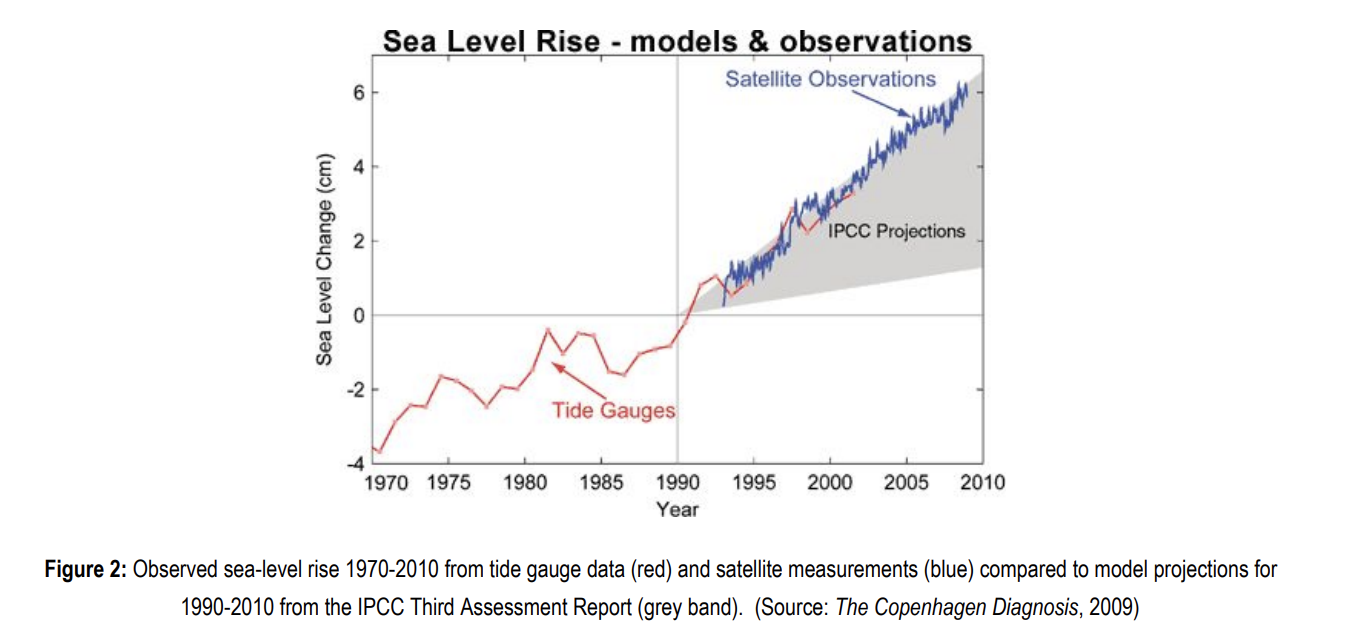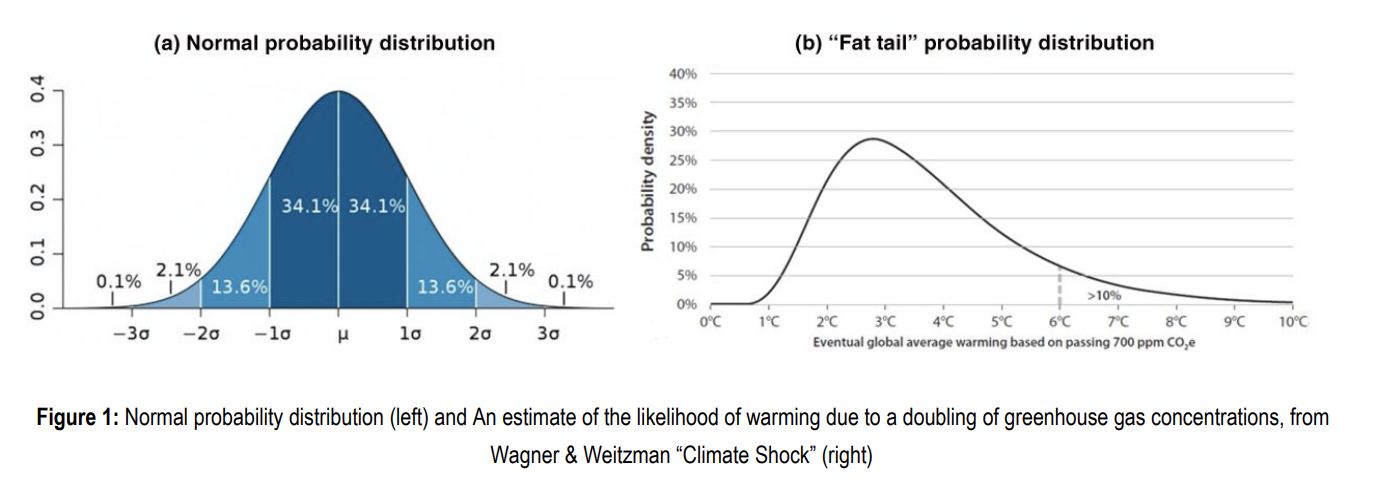Those who deny the reality of anthropogenic climate change often point to the fallibility of climate models, calling those who agree with such estimates "alarmists."
But far from overstating the effects of a rapidly warming planet, a new report - called "What Lies Beneath: The Understatement of Existential Climate Risk" - argues that the bulk of climate research has tended to underplay the real risks of climate change.
While the report doesn't present any new research, it does draw on previous studies and quotes from leading climate scientists to show that most climate research is based on "conservative projections and scholarly reticence."
The foreword is written by Hans Joachim Schellnhuber, who was the head of the Potsdam Institute for Climate Impact Research for twenty years, and a senior advisor to Pope Francis, German Chancellor Angela Merkel and the European Union.
The paper itself is primarily focused on reports made by the Intergovernmental Panel on Climate Change (IPCC), which not only provides information for climate policymaking around the world, but also influences the public narrative around climate change.
Yet because of political and industry pressure, the paper argues that: "IPCC reports also tend toward reticence and caution, erring on the side of 'least drama,' and downplaying more extreme and more damaging outcomes."
Predictions for sea level rise are a classic example of how the IPCC tends towards the "safest" position when dealing with conflicting science.
In 2001, the IPCC report estimated a sea level rise of 2 millimeters (mm) per year. By 2007, however, that estimate was outrun by satellite data, which revealed a sea level rise of 3.3 mm per year.
In 2007, a similar thing happened. The IPCC report predicted 18 to 59 centimeters (cm) of sea level rise by 2100. But just two years later estimates suggested a sea level rise of 0.50 meters to 2 meters by 2100.

Despite the mistakes made in previous estimates, in 2014, the IPCC actually predicted a smaller sea level rise than seven years previous. Instead of 59 cm, the panel now predicted only 55 cm of sea-level rise.
A 2017 revised NOAA report shows how far-off these predictions were, placing the worst-case scenario at 2.5 metres by 2100, 5.5 metres by 2150 and 9.7 metres by 2200.
The authors of the new report explain that the conservative and inaccurate IPCC estimates were made because "scientists compiling the report could not agree on how much would be added to sea-level rise by melting polar ice sheets, and so left out the data altogether" to reach some sort of consensus.
Science historian Naomi Oreskes calls this "consensus by omission," and while it is certainly understandable, Schellnhuber argues it is "dangerously misleading."
It's not just sea level rise, either.
For similar reasons, many climate models do not take into account tipping points and positive feedback loops that could amplify warming, like the release of greenhouse gases from thawing permafrost, the loss of West Antarctic glaciers, and reduced ocean and terrestrial CO2 removal from the atmosphere.
A 2013 study by Oreskes found past predictions from climate scientists have been "conservative in their projections of the impacts of climate change" and that "at least some of the key attributes of global warming from increased atmospheric greenhouse gases have been under-predicted, particularly in IPCC assessments of the physical science."
Far from being biased toward alarmism, it appears that many climate scientists are erring on the side of caution, under-predicting the future climate changes.
Barrie Pittock, a marine and atmospheric scientist at CSIRO, wrote an explanation for this in 2006. He stated that:
"… until now many scientists may have consciously or unconsciously downplayed the more extreme possibilities at the high end of the uncertainty range, in an attempt to appear moderate and 'responsible' (that is, to avoid scaring people). However, true responsibility is to provide evidence of what must be avoided: to define, quantify, and warn against possible dangerous or unacceptable outcomes."
Much of this has to do with statistics. In the IPCC lexicon, future outcomes are considered "unlikely" if they lie outside the brackets of a normal probability distribution.
But, as the report argues: "Focusing on 'middle of the road' outcomes, and ignoring the high-end possibilities, may result in an unexpected catastrophic event that we could and should have seen coming."
That's because climate change does not present as a normal distribution. Instead, it is skewed by a fat tail, as can be seen in the image below.
This means that there is more area under the far right extreme of the curve, indicating a greater likelihood of warming that is well in excess of the average climate models.
In other words, the chances of Earth warming by six degrees Celsius is not 2 percent, as the normal distribution suggests, it's actually 10 percent.

Because calculating probabilities has its flaws and limitations, Schellnhuber argues that we should focus less on climate models and more on extreme scenario planning.
These scenarios would take into account future possibilities that would have major consequences, even if they seem highly unlikely now - echoing the old adage: "Better to be safe than sorry."
One such scenario, laid out in the recent "Hothouse Earth" paper - written by sixteen scientists, including Schellnhuber himself - reveals that if the planet breaches a pivotal climate threshold, we may reach a point of no return.
"Climate change is now reaching the end-game, where very soon humanity must choose between taking unprecedented action, or accepting that it has been left too late and bear the consequences," warns Schellnhuber in the report.
The report has been published by the Breakthrough National Centre for Climate Restoration, an independent think tank based in Australia.
